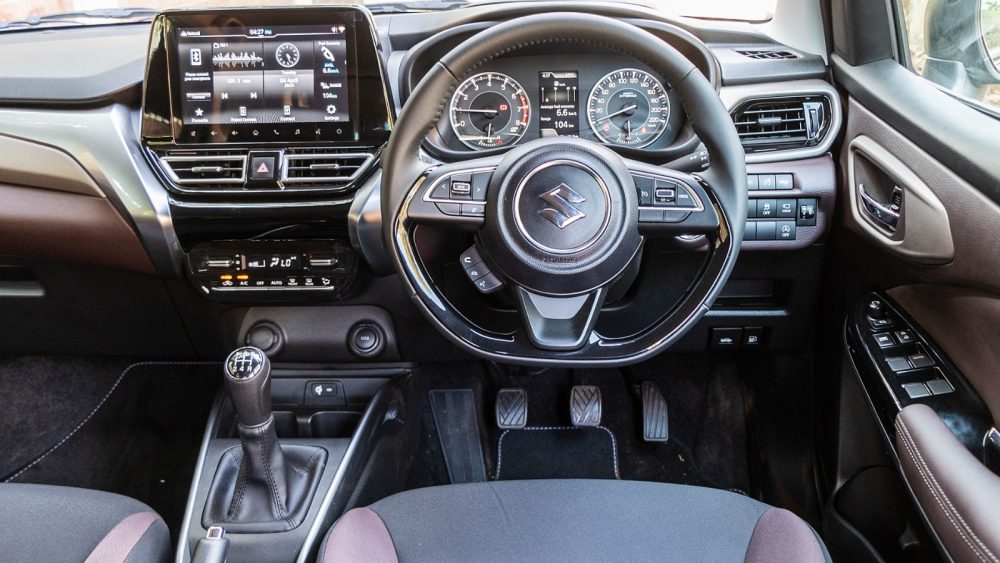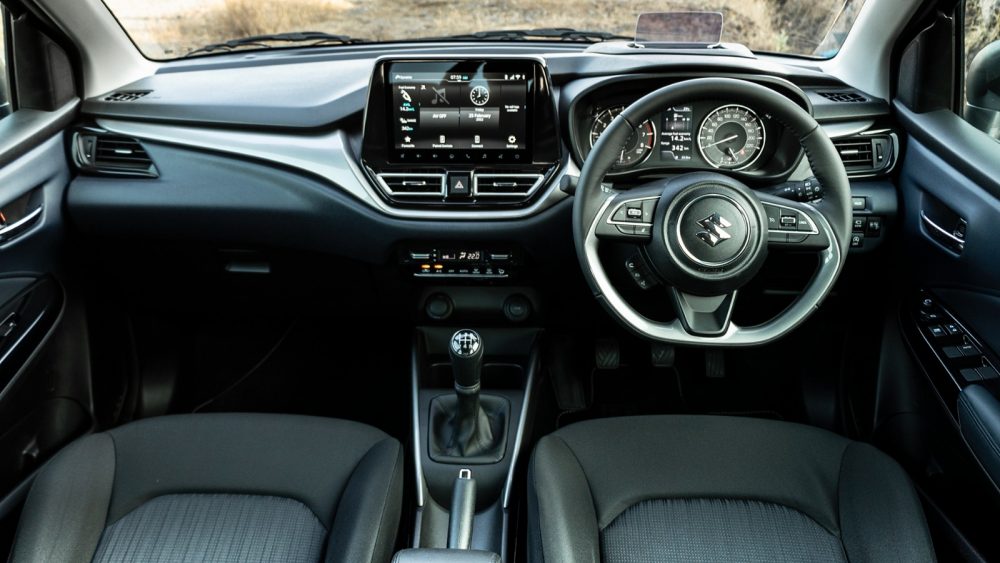Introduction:
Maruti Suzuki, a renowned car manufacturer in India, has made a unique design choice that sets them apart from the competition – they have implemented the same dashboard pattern and steering wheels across their car models. Whether it’s the Brezza, Fronx, Grand Vitara, or Baleno, the consistency in the dashboard layout remains intact. This deliberate design decision has raised questions and curiosity among car enthusiasts. In this blog, we will delve into the reasons behind Maruti Suzuki’s same dashboard pattern, exploring the benefits it brings in terms of consistency in design, cost efficiency, enhanced user experience, aftermarket customization options, and compliance with industry standards. Join us as we unravel the intriguing rationale behind Maruti Suzuki’s design philosophy.

Design Consistency
Maruti Suzuki knows the importance of maintaining a consistent brand identity, and one way they do so is by using the same dashboard pattern and steering wheels throughout all of their vehicle models. Maruti Suzuki produces a recognizable and unified brand image by using consistent design language. The similar dashboard layout generates a sense of familiarity and trust among customers, whether you’re driving a Brezza, Fronx, Grand Vitara, or Baleno. This design strategy not only strengthens the brand’s identity, but it also improves customer perception and loyalty. Maruti Suzuki’s dedication to design consistency distinguishes them in the automotive business, making its vehicles readily recognizable on the road.
Cost-effectiveness
One of the primary reasons for Maruti Suzuki’s decision to use the same dashboard layout and steering wheels across all of their vehicle models is cost-effectiveness. Maruti Suzuki may generate significant cost reductions throughout the manufacturing process by standardizing key components.
For starters, using the same dashboard style enables Maruti Suzuki to capitalize on economies of scale. They can negotiate better deals with suppliers and benefit from bulk discounts on components by making a large number of identical dashboards. As a result, overall production costs are reduced.
Furthermore, standardizing components streamlines the manufacturing process. As workers become acquainted with a constant set of components, the assembly line becomes more streamlined and efficient. This decreases complexity and the possibility of errors, leading to increased production and cost savings.
A standardized dashboard pattern also eliminates the need for separate production lines for each automobile model. Instead, Maruti Suzuki can better manage resources, optimize manufacturing facilities, and lowering overhead costs.
Maruti Suzuki may sell its automobiles at competitive costs by attaining cost efficiency with the same dashboard style. This affordability element is critical in recruiting a broader consumer base and preserving their leadership position in the Indian car market.

Improved User Experience
Maruti Suzuki’s choice to adopt the same dashboard layout and steering wheels across all of their vehicle models aims to improve the overall user experience for their consumers.
A well-known dashboard architecture offers various advantages in terms of usability and convenience. Customers can simply adapt to the controls and layout when switching from one Maruti Suzuki model to another because they are consistent across the range. This minimizes the learning curve associated with a new car and allows drivers to feel comfortable and competent behind the wheel right away.
Furthermore, the familiar controls’ intuitive nature improves driver comfort. Climate control, audio settings, and instruments are appropriately located, enabling simple access and effortless operation. This constancy allows drivers to concentrate on the road ahead, which reduces distractions and ensures a safer driving experience.
Furthermore, the same dashboard pattern fosters dependability and trust. Customers who have previously bought or driven a Maruti Suzuki vehicle may expect the dashboard layout to be of similar quality and functionality. This consistency stimulates repeat purchases and builds brand loyalty.
Maruti Suzuki aspires to provide not just functional and reliable cars, but also a seamless and delightful driving experience for their valued customers by prioritizing increased user experience through a standardized dashboard pattern.
Our Take:
Maruti Suzuki’s deliberate decision to use the same dashboard layout and steering wheels across all of their car models has various benefits. Design consistency not only creates a recognizable and unified brand identity, but it also improves customer perception and loyalty. Furthermore, by utilizing economies of scale and optimizing the production process, this design approach helps to cost efficiency. The standardized dashboard layout enhances the overall user experience by enabling easy flexibility, intuitive controls, and fewer distractions, resulting in a safer and more enjoyable driving experience. In addition, the same dashboard pattern serves as a blank canvas for aftermarket customization, allowing consumers to personalize their vehicles while preserving a similar base design. Finally, Maruti Suzuki’s adherence to industry norms and regulations demonstrates the company’s dedication to manufacturing high-quality, safe, and dependable vehicles. Overall, Maruti Suzuki’s use of the same dashboard design demonstrates their strategic forethought and commitment to providing a quality vehicle experience to their valued customers.





